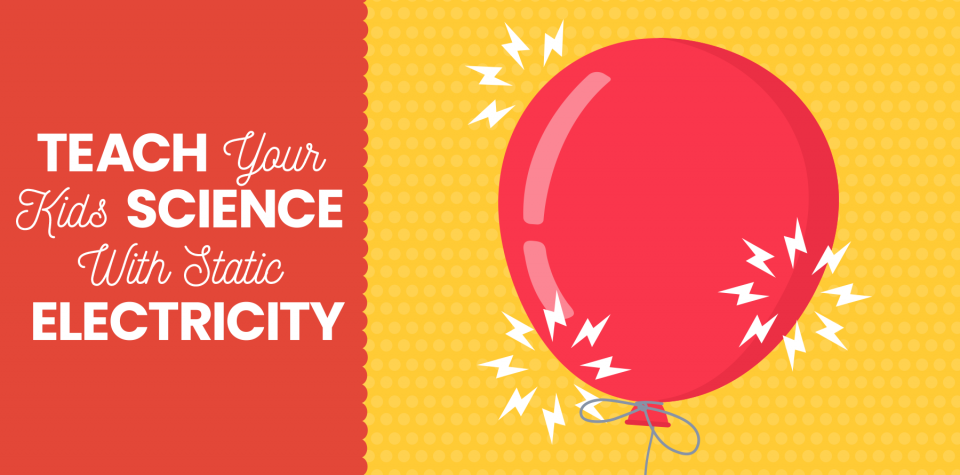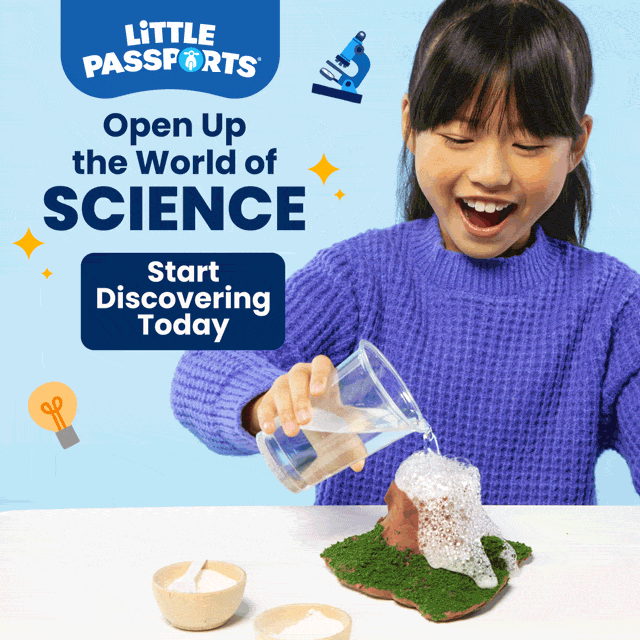
Teach Your Kids Science with Static Electricity
It’s National Static Electricity Day! To help light up your kids’ curiosity, dive into this super easy, fun, hands-on game to demonstrate static electricity and teach how it works.

Master Water Bender Contest
Hold a friendly competition with your kids to see who can find the best way to move a stream of water using static electricity. It’s trickier than it looks!
Supplies:
Faucet and sink
1 hand towel or washcloth per person
Latex rubber balloons (most designed to inflate yourself should work)
Ruler
Plastic, rubber, or wood objects for experimenting
Directions:
Step one: Blow up the balloons and tie off their ends so they don’t deflate. Older kids may be able to do this themselves, but younger kids will need your help.
Step two: Instruct kids to rub their balloon with a hand towel or washcloth for 20 to 30 seconds. That should be enough to give the balloon an electrostatic charge.
Step three: Turn on the faucet. A small flow of water works best for the experiment. Have the kids take turns holding their balloon close to, but not touching, the stream of water. Ask them to observe the bottom of the stream and tell you what happens. The water should move toward the balloon.
Step four: Explain the science. This trick works because of electrostatic attraction. The balloon, water, and cloth are made of tiny particles called atoms. Inside of those are a bunch of even tinier particles called electrons. When you rub the balloon with the cloth, some of the cloth’s electrons stick to the atoms in the balloon. This gives the balloon a negative charge. But water is different. Because of the way its electrons are shared between its atoms, it has both a negatively charged part with more electrons and a positively charged part with fewer electrons.
Negatively charged things and positively charged things like to be near each other, so when the negatively charged balloon gets close to the water, the positively charged part of the water moves toward it. This makes the stream of water pull toward the balloon.
Step five: Now that you’ve explained the science, challenge kids to experiment and see if they can move the stream of water farther than they did the first time. Maybe someone will want to try holding the balloon at the top of the stream or the bottom of the stream, using a smaller or larger balloon, or rubbing the balloon with the cloth longer. Encourage players to see what happens when a balloon gets wet. (It will lose its negative charge immediately and stop attracting the water.)
The changes in the stream may be tough to see, so put a ruler at the bottom of the sink to help you measure. If you can’t measure the differences, that’s okay! Finding out what has a noticeable effect and what doesn’t is an important part of science.
Step six: To encourage kids to have a scientific mindset, get them thinking about how their experiments played out. Did holding the balloon at the top or bottom of the stream work better? Did the length of time they rubbed the balloon with the cloth matter?
To expand the game, try this same technique with other objects. The balloon works well because it’s an insulator—once it’s negatively charged, it hangs onto its extra electrons for a while (eventually they move onto an object the balloon is touching or onto atoms in the air). Other good insulators include rubber, plastic, and wood. Balloons are hard to beat, but never underestimate kids’ inventiveness—maybe they’ll find a new champion insulator!
If your kids enjoyed this game, check out our Science Junior and Science Expeditions subscriptions! They’ll love the inventive experiments and fun facts.

